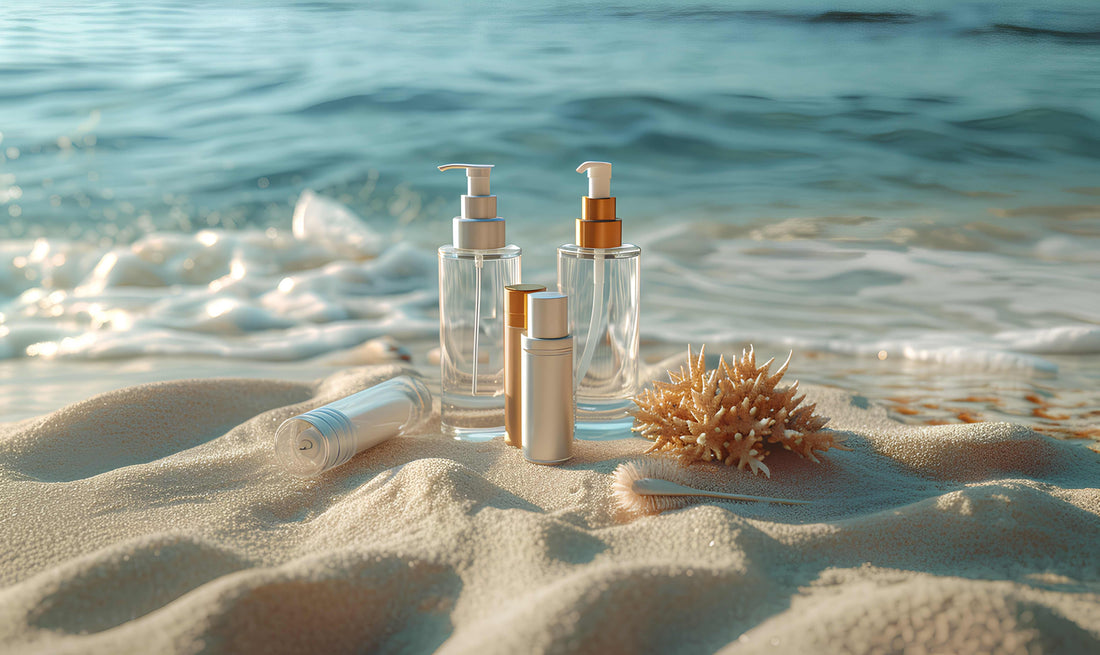
UV Protection: Your sun-safe fact file
Damage limitation
As well as being responsible for 80-90% of ageing, exposure to UV rays can lead to skin cancer, making it even more important to protect ourselves and there are lots of ways we can do this, but first – SPF...
What is SPF?
The Sun Protection Factor (SPF) rating measures how much UVB protection a product gives. A product with a higher SPF will shield more of the sun’s rays, however, the level of protection does not increase exponentially with a higher rating like you would expect. Studies show that a SPF 30 sunscreen will protect your skin from 97% of the sun’s UVB rays, while an SPF 50 sunscreen will shield your skin from 98% of UVB rays. That might seem like a tiny difference, but thorough application and reapplication is key and that added 1% of protection a SPF 50 product provides over a prolonged period can make a significant impact on the health of your skin.
SPF and its role in addressing skin concerns
Ageing
UV exposure causes alterations to your cellular DNA, which can lead to slower healing and puts us at risk of skin cancer. It is thought that UV exposure may account for up to 80% of visible signs of aging in the skin.** Many studies have tested the effects of solar radiation and oxidative stress on the skin, with oxidative stress linked to loss of skin elasticity.** Large doses of UV have also been said to possibly inactivate carotenoids in the skin and promote degradation of dermal collagen.***
Pigmentation
Pigmentation or hyperpigmentation is a darkening of the skin, tan or freckles. Age spots, sunspots and dark marks are all types of hyperpigmentation and can be caused by UV exposure or trauma to the skin.
How much SPF should I apply?
The Irish Cancer Society recommends that the average adult should apply 35ml of sunscreen to their entire body. You should apply ½ teaspoon of SPF to your face, neck, and ears, 1 teaspoon to each arm, 1 teaspoon for each leg, 1 teaspoon for your chest and stomach, and 1 teaspoon for the back of your body. To maintain the efficacy of your sunscreen, keep an eye on its use-by date, store it below 30°C and keep it out of direct sunlight. An easy benchmark for your facial SPF dosing is to draw your product along the length of two fingers: that’s enough to cover your whole face.
Is the SPF in my moisturiser or makeup enough?
Unlikely. There are many products on the market that contain sunscreen, but that doesn’t make it an actual sunscreen. Foundation and other forms of makeup containing SPF can be beneficial as an added extra but should be not used in place of a sunscreen. The reason? It would take HEAPS of foundation to make up the daily recommended amount of SPF (a shot glass full in fact) which is way more than we imagine one would want to wear...
Chemical v Mineral sunscreen
UV filters are split into two categories: chemical and mineral, but according to Mintel’s Suncare Report 2022, 61% of sunscreen users cited difficulty in recognising the difference between a chemical and mineral suncare product, indicating the need for greater purchasing support. So, what is the difference? Put simply, chemical filters work like sponges by absorbing UV rays, while mineral filters act to both reflect and absorb UV rays. Mineral filters are generally recommended to those with very sensitive skin and concerns like eczema, perioral dermatitis and rosacea.
What are the different types of UV rays?
UVA rays are what we call ‘ageing’ rays and responsible for 80-90% of ageing. UVB rays are ‘burning’ rays and cause inflammation and burns on the skin. You can check if the SPF protects against UVA rays by checking the INCI list because it will contain at least one of the following active ingredients: zinc oxide, titanium dioxide, avobenzone or Tinosorb. If the product does protect against UVA rays, it should have a PA +++ rating.
What does broad spectrum mean?
Broad-spectrum means that it protects against UVA and UVB rays.
What should we be looking for in an SPF INCI?
If mineral filters are your thing look out for zinc oxide and titanium dioxide. If you are more into chemical filters, these are what you should be looking for: avobenzone, octisalate, octocrylene, homosalate and octinoxate. Always ensure your product is broad spectrum protecting you from UVB and UVA rays. To protect your skin from UVA rays as well you can check your INCI list, your sunscreen product must contain at least one of the following active ingredients: zinc oxide, titanium dioxide, avobenzone or Tinosorb.
How long does sunscreen last?
The shelf life for sunscreens is typically 30 months, but this depends on the quality of the formula. To maximise lifespan, sunscreens should be stored in a cool, dry place, out of direct sunlight. You should also refer to the ‘period after opening’ (PAO) symbol on the labelling. The PAO symbol is a small picture of an opened jar with a number printed within it – this number shows the number of months the product can be used for after it has been opened.
What are some other ways to stay protected from UV rays?
SPF is non-negotiable when it comes to keeping your skin at its healthiest but when it comes to UV protection, there are other important ways to safeguard your skin you should consider too. Start by never using sun beds or attempting to get a natural tan. You should also follow the SunSmart 5S rule: slip, slop, slap, seek and slide:
Slip on clothes that cover your skin, such as long sleeves and t-shirts with a collar.
Slop on broad-spectrum (UVA/UVB) water-resistant sunscreen. Apply it on skin that is not covered, using factor 30+ for adults, 50+ for children. Reapply every 2 hours or more often if sweating, swimming or towel drying.
Slap on a wide-brimmed hat to protect your face, ears and neck.
Seek shade especially if outdoors between 11am and 3pm and always use a sunshade on a child’s buggy. Keep babies and children out of direct sunlight.
Slide on wraparound sunglasses with UV protection to protect your eyes.
